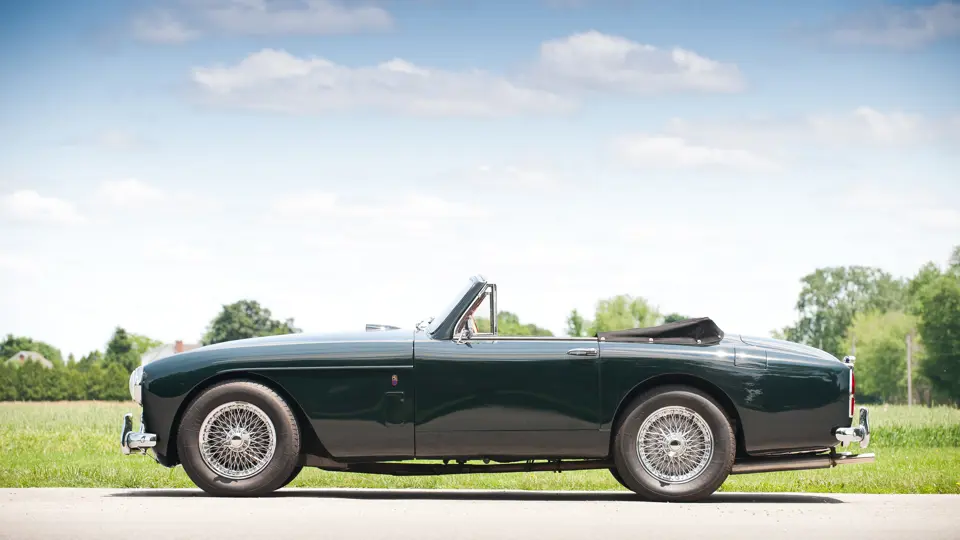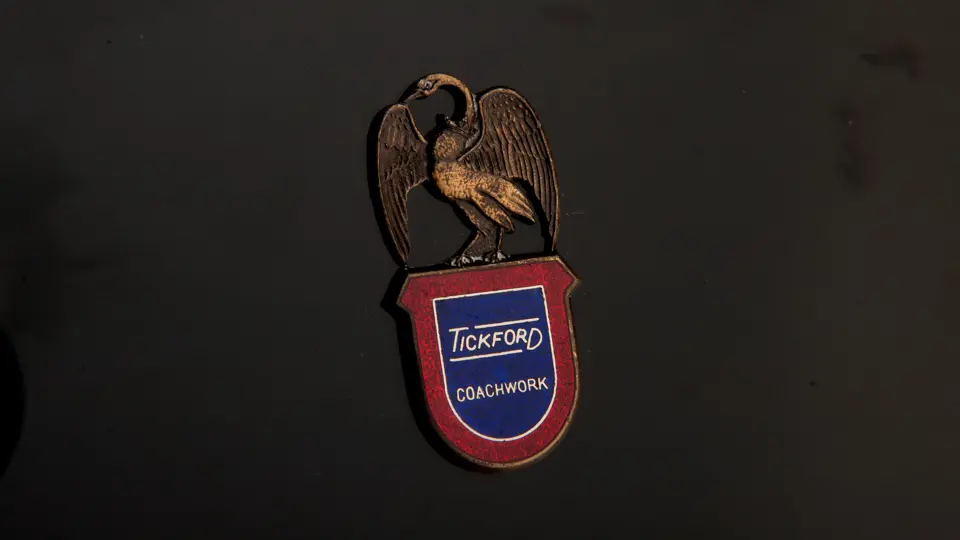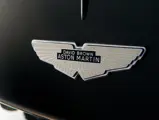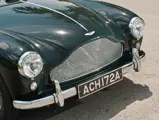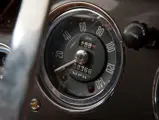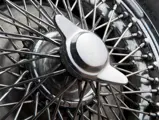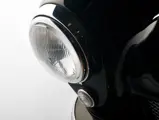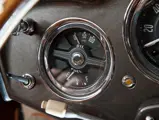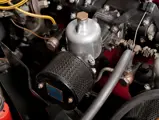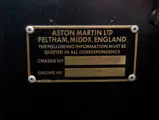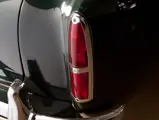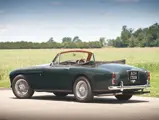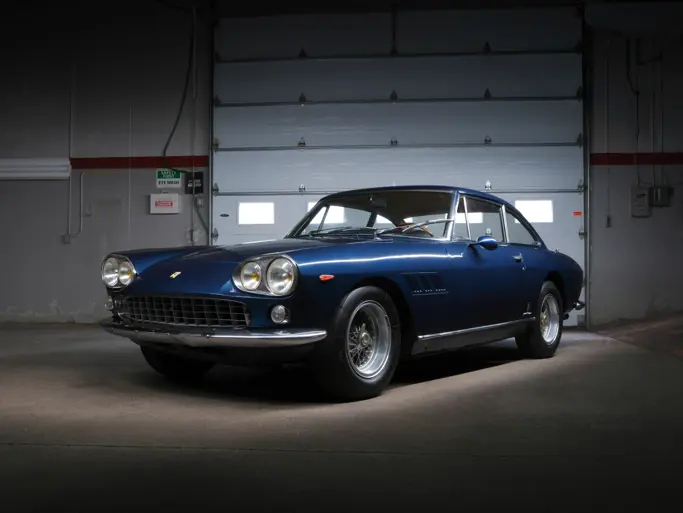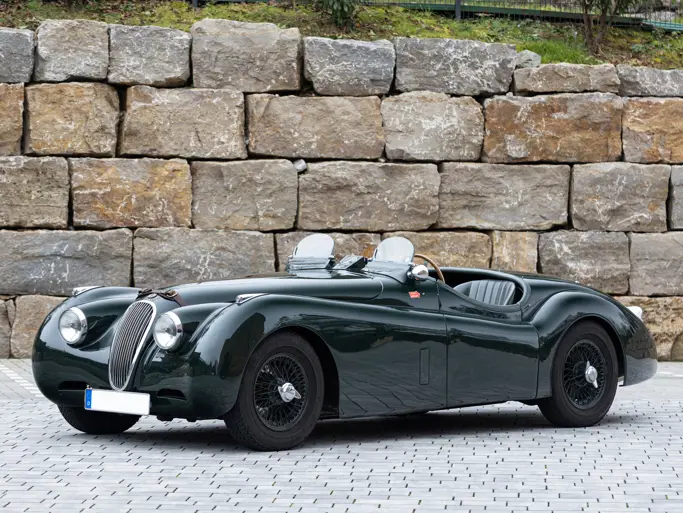178 bhp (SAE), 2,922 cc DBA inline DOHC six-cylinder engine, dual SU carburetors, twin exhaust system, synchronized four-speed manual gearbox, Laycock de Normanville overdrive, independent front suspension with trailing link, coil springs and Armstrong lever dampers, live Salisbury rear axle located by trailing links and transverse Panhard rod, and hydraulic front disc, “Alfin” rear drum brakes. Wheelbase: 99"
- Very rare – one of only 84 Drophead Coupes built
- The ultimate iteration of the DB2, the first true postwar Aston Martin
- A well-maintained older restoration; showing just under 30,400 miles
- Complete with a copy of the original Aston Martin build record
The landmark DB2, considered by many marque enthusiasts to be the first true postwar Aston Martin model, was introduced in May 1950. The ultimate and most highly-refined variant, the DB Mark III (the “2/4” designation was eventually dropped) was introduced in March 1957 and produced in both Fixed-Head and open Drophead Coupe form through July 1959, when it was ultimately succeeded by the all-new DB4, which was initially advertised by its manufacturer as “a companion to the DB Mark III.”
Polish-born Aston Martin engineer Tadek Marek thoroughly revised the existing six-cylinder W.O. Bentley/Lagonda engine design, with output rising to 162 bhp or 178 bhp with the optional twin exhaust system. Front disc brakes supplemented “Alfin” finned aluminum rear drum brakes, with the upgrade optional on the first 100 DB Mark IIIs produced and standard equipment on the ultimate Mark IIIB of 1958-1959.
Styling and body fittings were updated, most notably with a revised grille opening inspired by the famed DB3S sports racer of 1953 to 1956. The new grille of the DB Mark III influenced Aston Martin styling for many years to follow, with this now-iconic basic design cue providing unmistakable brand continuity and essentially remaining in effect through the V-8 models of the late 1980s. Among the many other updates of the Mark III, a revised instrument panel designed by Frank Feeley echoed the grille’s shape and now relocated the gauges directly in front of the driver.
In popular culture, while the later DB5 is most often associated with Her Majesty’s Secret Agent James Bond, Ian Fleming’s original novel Goldfinger actually had 007 driving a DB Mark III. Only 551 examples of the DB Mark III were produced during a relatively brief production run spanning 1957 and 1959, including one purpose-built competition model. Of those few cars though, only 84 were the elegant and sporting Drophead Coupe variant. With their Feltham-era, hand-built quality and legendary road-ability, the cars continue to be highly coveted today.
According to a copy of its original Aston Martin production record, this handsomely presented original right-hand drive 1958 DB Mark III Drophead Coupe was delivered new to its first owner, Mr. Alfred W. McAlphine, on September 29, 1958. It was originally finished in Deep Carriage Green and well equipped with such desirable “Non-Standard Equipment” as Laycock de Normanville overdrive, a twin exhaust system (good for an approximate 10 percent power gain) and a wood-rimmed DB3S-type steering wheel. Following delivery to its original owner, Aston Martin Works Service maintained the car, and factory records list the work that was performed to the car in 1963, 1964 and finally on January 21, 1969, with only 1,339 recorded miles.
In 2008 and at a recorded 30,184 miles, AM 300/3/1700 was inspected, serviced and received paintwork from Aston Workshop, the UK-based authorized Aston Martin service center. Today, the odometer of AM 300/3/1700 shows only about 30,400 miles. The car’s most recent private owners were the family of Bernie Madoff. As presented in its factory-correct Deep Carriage Green finish and now trimmed in tan leather upholstery, the car features the matching-numbers DBA six-cylinder engine.
A recent inspection confirms that as presented the car is a slightly older restoration that has held up very well and also performed well on a recent road test. The bodywork, finish and brightwork present well, and the engine and engine compartment are commensurate with the car’s limited mileage and careful maintenance over the years. The tan interior upholstery appears to be quite new and bears few obvious signs of wear, other than some scuffing on the door sills. The wire-spoke wheels are shod in period-style and virtually new 6.00X16 Michelin “Sport Pilote” X tires. A newer and very nice black convertible top and matching boot, as well as a jack, a properly mounted wheel hammer and a tool kit, round out the package.
The DB Mark III was the ultimate development of the groundbreaking DB2, which saw Aston Martin develop from a small specialist manufacturer to a marque of worldwide renown. The series provided the basis for Aston’s brilliant racing successes culminating in the 1959 World Sports Car Championship. Though marque connoisseurs have always appreciated them, demand for the DB Mark III has risen significantly in recent years. Its stature in today’s market is supported by its technical sophistication, excellent performance and eligibility for many of today’s most desirable vintage motoring events.


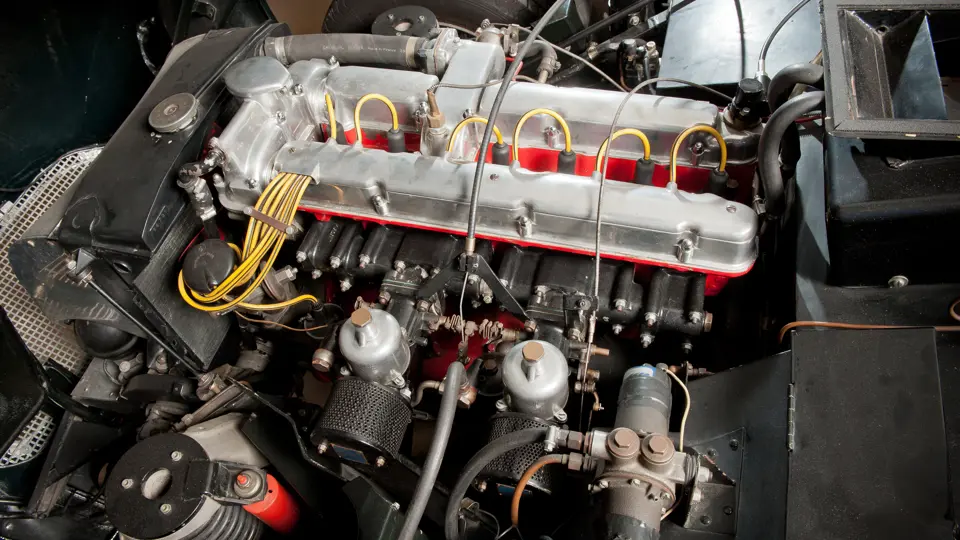

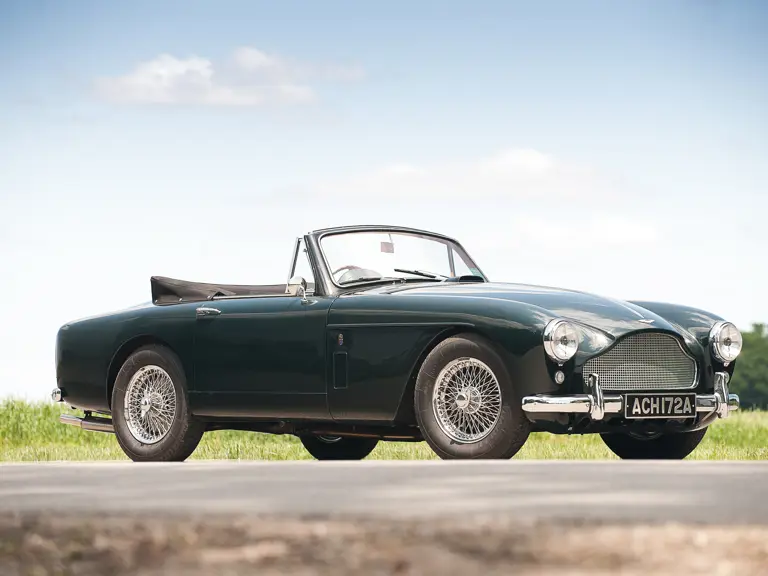
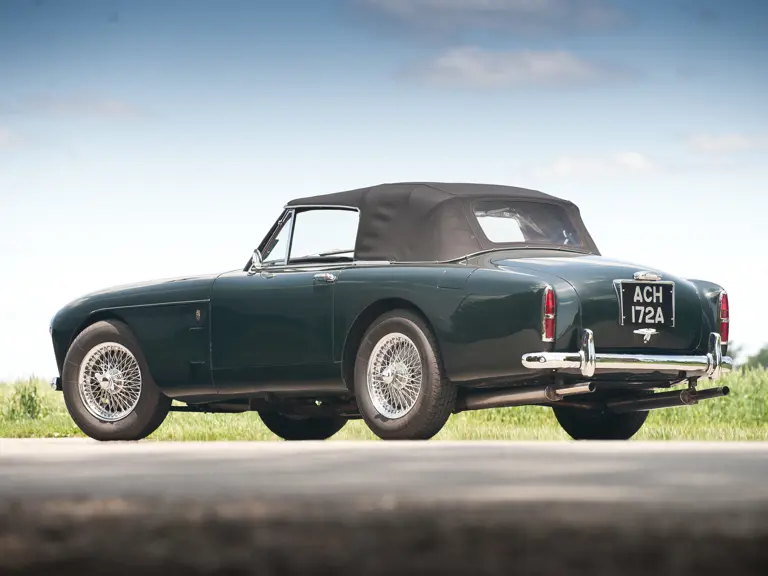
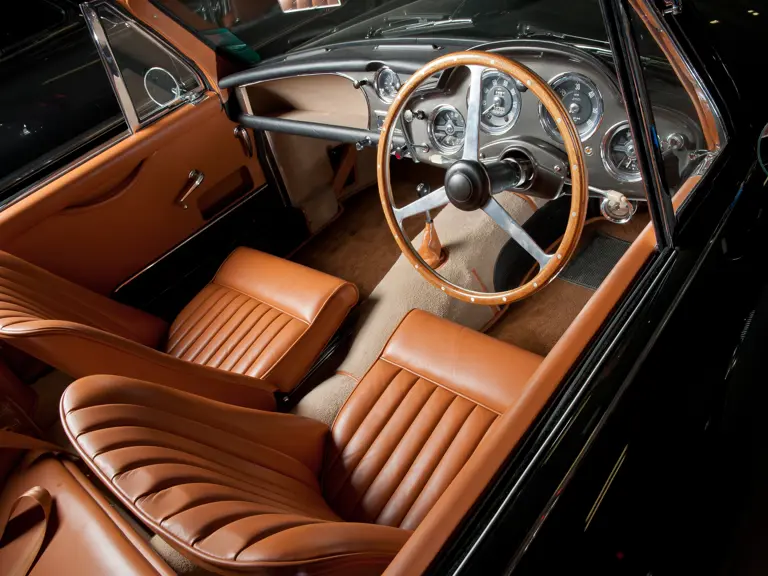
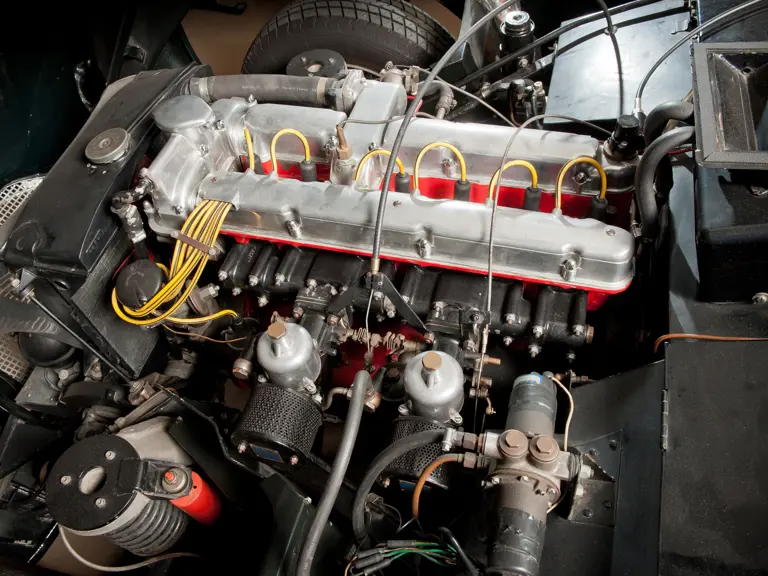
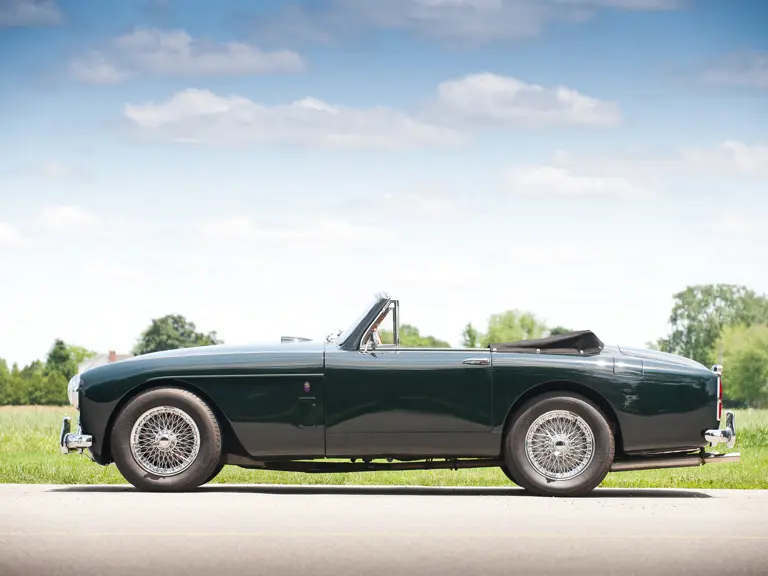
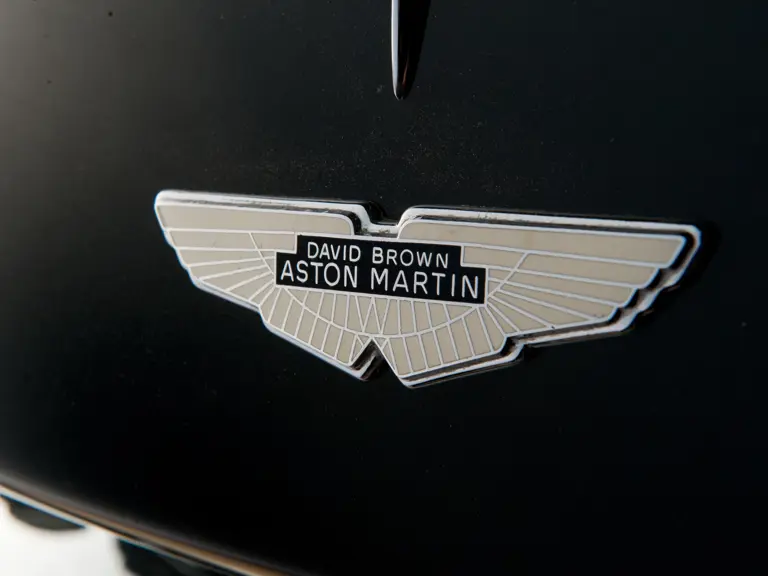

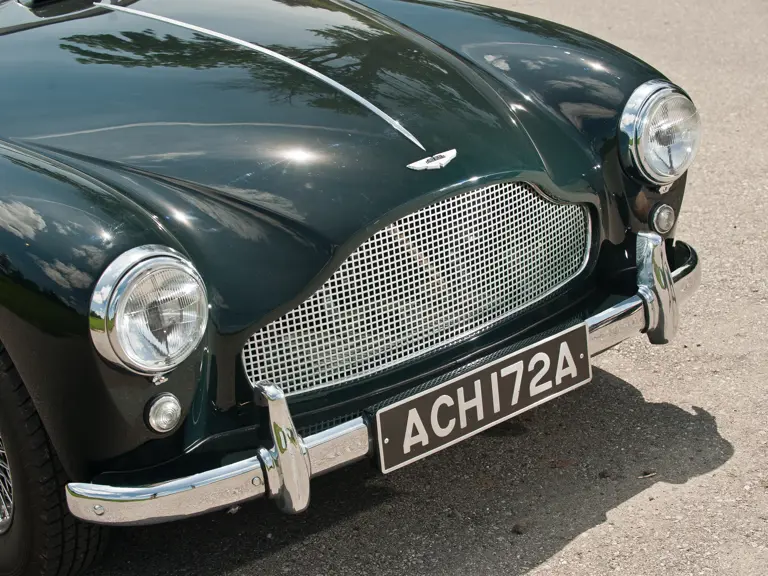

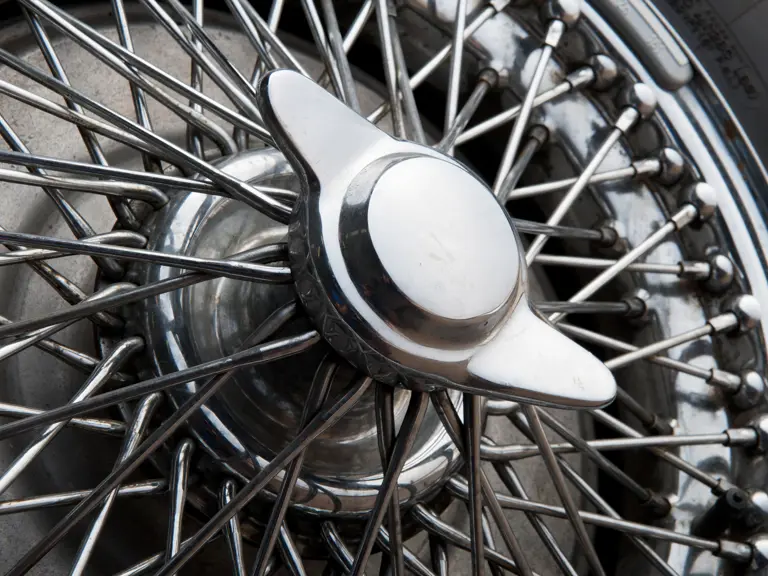
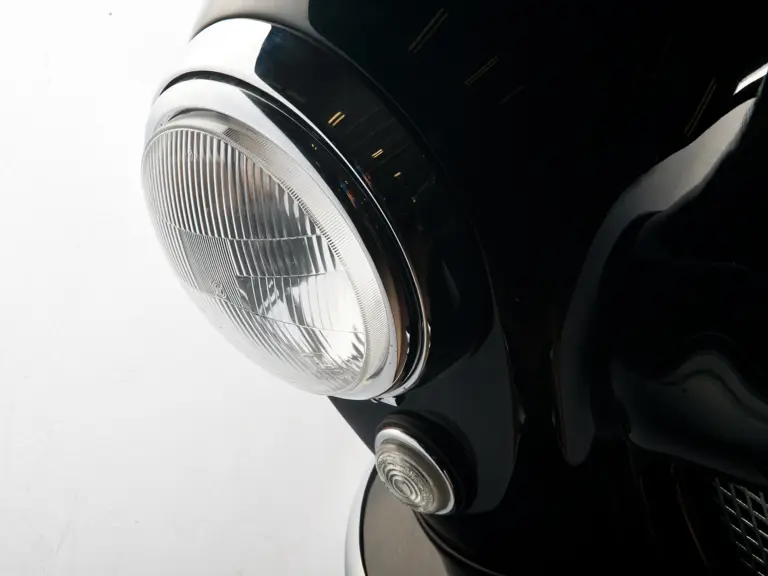
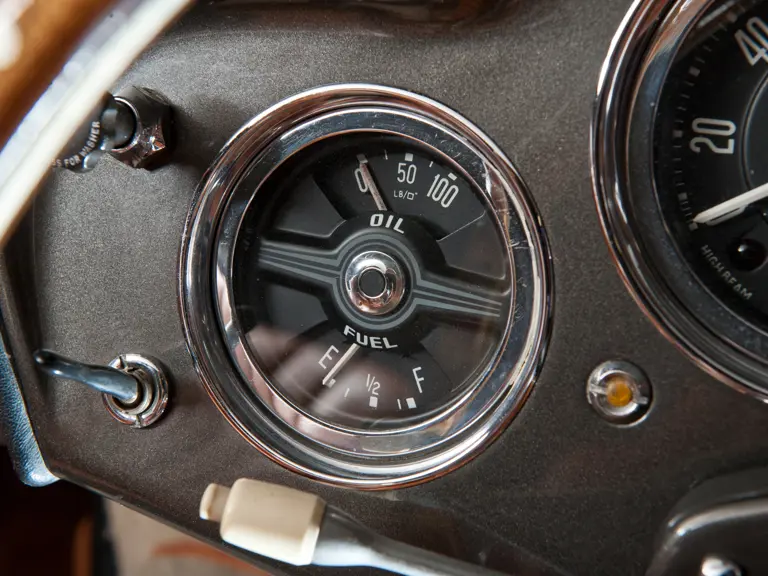

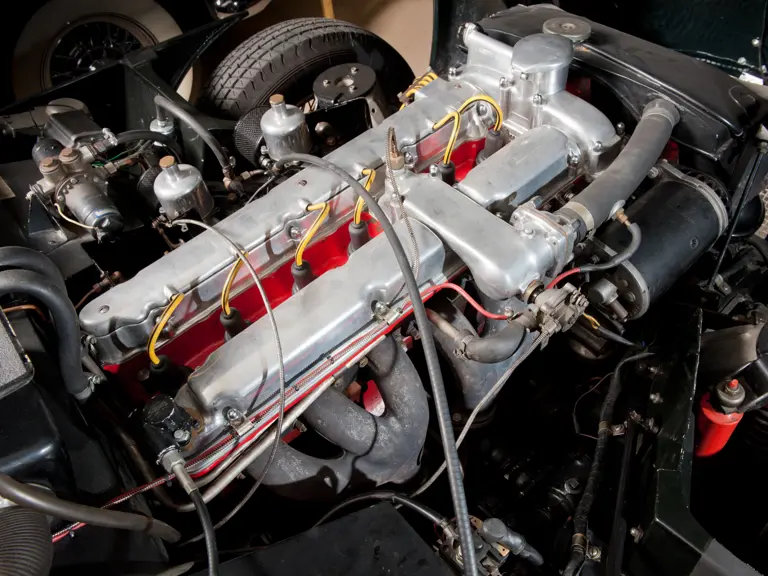
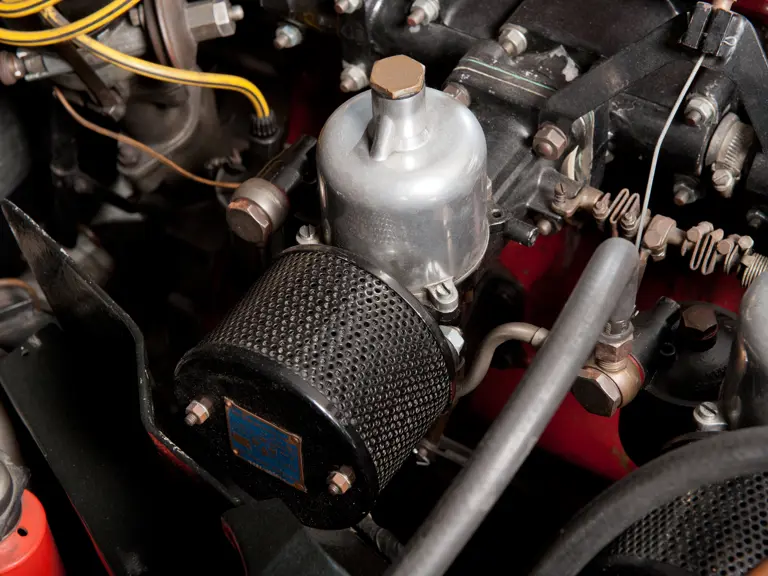
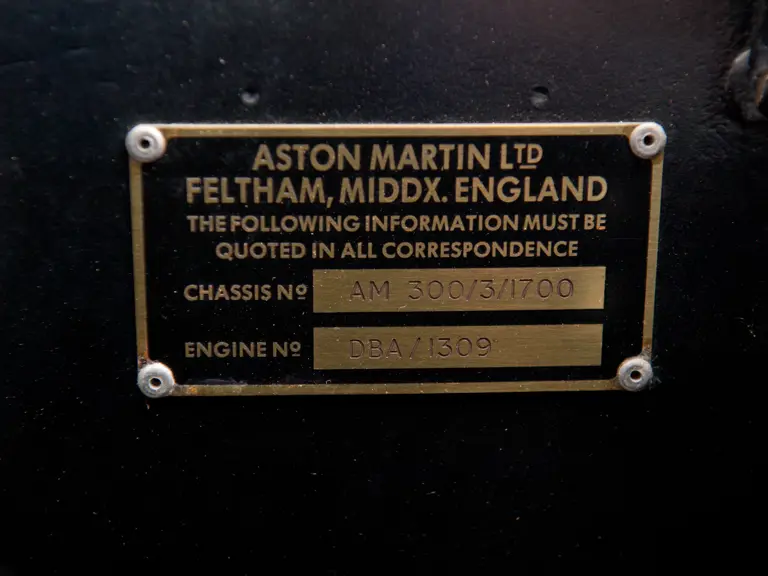

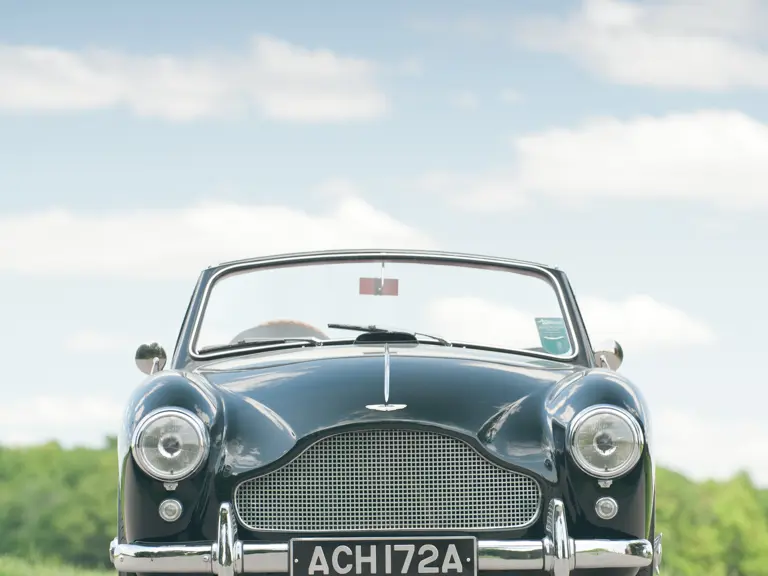
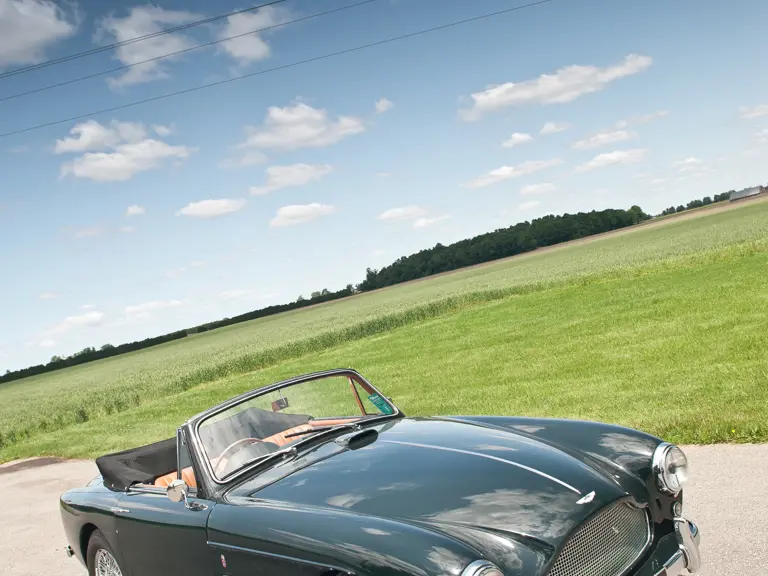
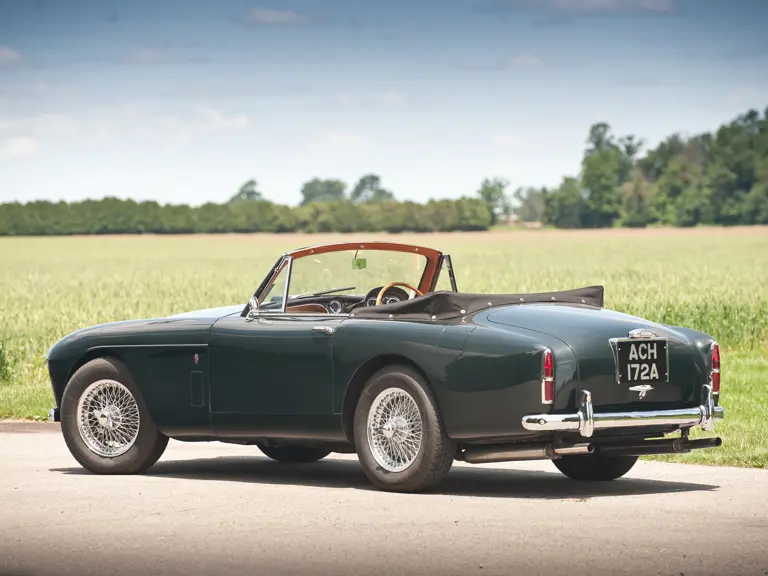
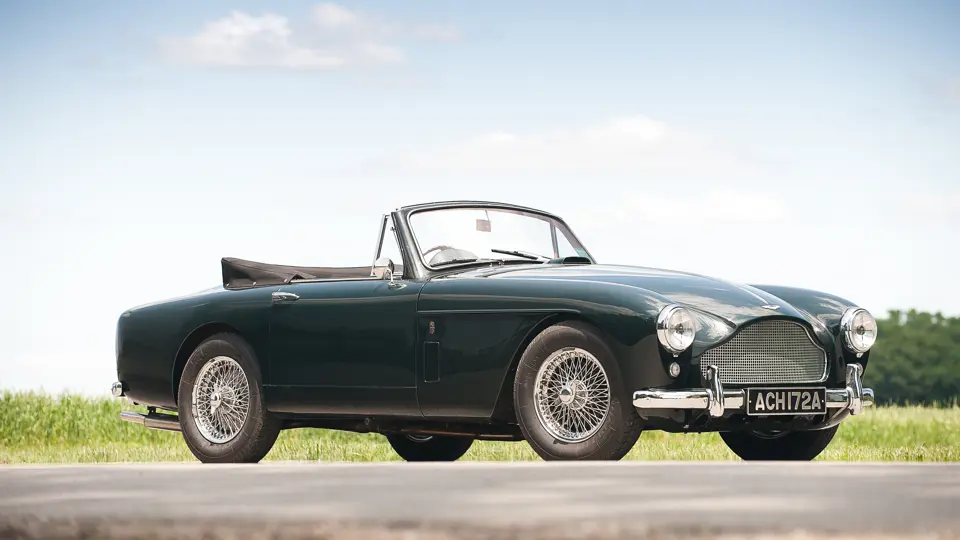
 | Monterey, California
| Monterey, California
